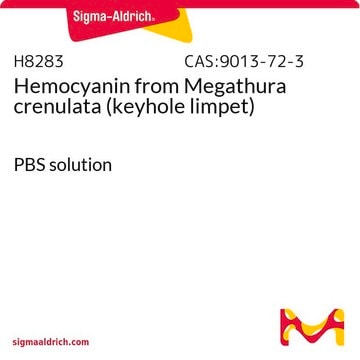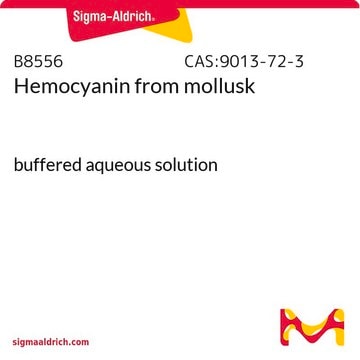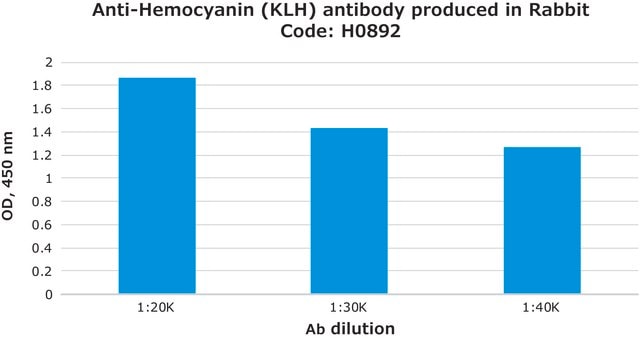374825
Hemocyanin, Keyhole Limpet, Megathura crenulata, High Purity, Endotoxin-Free, Sterile-Liquid
Hemocyanin, Keyhole Limpet, Megathura crenulata, High Purity, Endotoxin Free, is a large, multi-subunit, O2-carrying, metalloprotein that is used as a carrier protein in the production of antibodies.
Sinónimos:
Hemocyanin, Keyhole Limpet, Megathura crenulata, High Purity, Endotoxin-Free, Sterile-Liquid
About This Item
Productos recomendados
Quality Level
assay
≥95% (size exclusion chromatography)
form
liquid
manufacturer/tradename
Calbiochem®
storage condition
do not freeze
impurities
≤25 EU/mg Endotoxin
≥1.5 x 10⁻³ copper to protein ratio
≥5 mg/mL Protein
color
clear bluish
shipped in
wet ice
storage temp.
2-8°C
General description
Application
Biochem/physiol Actions
Packaging
Warning
Physical form
Preparation Note
Legal Information
Storage Class
10 - Combustible liquids
wgk_germany
WGK 2
flash_point_f
Not applicable
flash_point_c
Not applicable
Certificados de análisis (COA)
Busque Certificados de análisis (COA) introduciendo el número de lote del producto. Los números de lote se encuentran en la etiqueta del producto después de las palabras «Lot» o «Batch»
¿Ya tiene este producto?
Encuentre la documentación para los productos que ha comprado recientemente en la Biblioteca de documentos.
Nuestro equipo de científicos tiene experiencia en todas las áreas de investigación: Ciencias de la vida, Ciencia de los materiales, Síntesis química, Cromatografía, Analítica y muchas otras.
Póngase en contacto con el Servicio técnico





